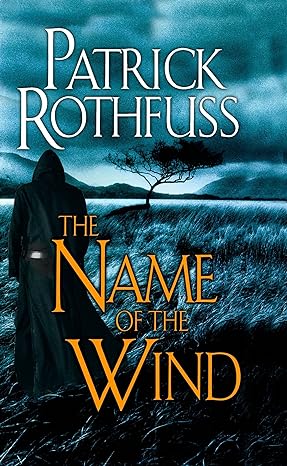Create a Compelling Structure:
Persuasive Storytelling
This blog will explore how a well-crafted structure can enhance the persuasive power of a story. After all, the way you introduce your otherworldly realm, develop your characters, and weave the magic or technology into the narrative can make or break your SFF tale. Nobody wants to write 100000 words of “It was confusing” or “I didn’t get it” or “I just couldn’t get into it.” Ugg!
The art of building a captivating structure for SFF stories requires every word to become a portal to an uncharted universe, and every page an adventure waiting to be embarked upon. This takes a skill across every page, slowly developed, throughout the entire story. Novels with compelling structures are often celebrated for their innovative and compelling storytelling that engages readers in unique ways. For example, Frank Herbert’s Dune uses alternating viewpoints and multiple storylines to build the world of Arrakis and its central characters.
Or we can examine The Name of the Wind by Patrick Rothfuss. The first book in The Kingkiller Chronicle series is known for its innovative structure, a frame narrative where the protagonist, Kvothe, recounts his life story to a chronicler over the course of three days. This structure allows for a rich, detailed exploration of Kvothe’s life, adventures, and the world of magic, as well as ongoing mysteries and character development. Hyperion, the novel by Dan Simmons is structured as a frame narrative, where seven pilgrims each share their life stories and the reasons for their journey to the distant planet of Hyperion.
Readers do want a well-structured narrative. A story with a clear beginning, middle, and end, sure. But to engage your readers and effectively convey the unique elements of the SFF genre through a scintillating, intriguing, buildup, is one of the important aspects of persuasive storytelling.
Areas you can explore to ensure a compelling structure would be:
- Establish the world. In SFF, the setting is often as important as the plot. Start by introducing your readers to the world you’ve created. Make sure to check out my blog Catch Readers by Surprise: The Unexpected Hook to think about how other authors used the world to draw in the reader. Describe its rules, technology, magic systems, or unique elements. Make the world vivid and immersive. Scatter details about your world and its history throughout the story. These details can enhance the richness of your setting without slowing down the narrative.
- Integrating unique elements. Rather than overwhelming readers with a deluge of information about your fantastical world, introduce these elements gradually as they become relevant to the plot. This avoids “info-dumping.” In Isaac Asimov’s “Foundation” series, he gradually introduced the concept of “psychohistory.” Psychohistory is a fictional science that combines history, sociology, and mathematics to predict the future of large populations. At first, this concept presented as a mysterious and somewhat abstract field of study, but further in the series he went deeper into the intricacies of psychohistory, demonstrating its significance and influence on the plot.
- Introducing actual plot-identified structure that blows the reader away: the act of introducing an inciting incident that disrupts the protagonist’s ordinary life and makes the reader gasp. This would show in novels like Ender’s Game by Orson Scott Card, where Andrew “Ender” Wiggin is brutally and unexpectedly recruited by the government to join the Battle School. When they rip out that brain sensor, I feel nauseous, every time.
Or maybe it’s The Golden Compass by Philip Pullman when Lyra Belacqua hides in a wardrobe and overhears a conversation about Dust. The Hunger Games by Suzanne Collins is that moment when Katniss Everdeen volunteers to take her sister’s place as a tribute in the Hunger Games. Or maybe the plot builds tension or conflict such as facing magical creatures (Percy Jackson and the Olympians: The Lightning Thief by Rick Riordan), navigating political intrigue in a futuristic society (The Windup Girl by Paolo Bacigalupi), or dealing with advanced technology gone awry (Jurassic Park by Michael Crichton).
- Creating Relatable Characters: The development of well-rounded, relatable characters with goals, motivations, and conflicts has the ability to relate them to your reader. There is an affinity to care about the characters and their journeys, even in a fantastical setting. For example, Aragorn is a beloved character known for his nobility, selflessness, and leadership. His journey from a ranger in the wilderness to a king and a hero of Middle-earth is filled with relatable challenges and growth in J. R. R. Tolkien’s The Lord of the Rings.
Or Hermione Granger from J.K. Rowling’s Harry Potter series. She is a highly relatable character in the world of magic. Her intelligence, strong moral compass, and determination resonate with readers. Her struggles with issues like prejudice and the importance of friendship make her a favorite among fans. Paul Atreides from Frank Herbert’s Dune or Katniss Everdeen from Suzanne Collins’s The Hunger Games series, us readers know what we like and we like relatable characters. These characters are all well-drawn, multi-dimensional, and relatable in various ways, which contributes to their enduring popularity and their ability to engage readers in the richly imaginative worlds of their respective SFF novels. - Obtaining an Emotional Connection: This is writing to create emotional connections between your readers and the characters and their struggles. Perhaps my favorite thing to write, it takes a lot of skill and immersion for the writer. It is essential, though for keeping readers engaged and invested in your SFF world. Examples would be novels like The Martian by Andy Weir. Who doesn’t love Mark Watney?
Or the grieving of Conor O’Malley in A Monster Calls by Patrick Ness. Tears flowed endlessly. Emotional connection within novels explores themes of resilience, loss, and the human condition in a way that resonates deeply with their audiences. And I can’t think of a better aspect to really compel a reader to keep reading than scoring an emotional connection of grief, joy, anger, fear, sadness, love, pain, hardship, or loss. Capturing even just sympathy when a reader feels sorry for the characters and their struggles will keep a reader engaged. The Road by Cormac McCarthy evokes deep sympathy from readers through its portrayal of a father and son struggling to survive in a devastated world.
In the realm of science fiction and fantasy, the boundaries of storytelling are simply boundless. It’s a genre where the ordinary becomes extraordinary, and the impossible becomes the backdrop for epic tales. When creating a compelling structure for SFF stories, remember the magic lies not just in the fantastical elements but in how you integrate them into a well-structured narrative. This is an art form of crafting immersive worlds, developing memorable characters, sinking into an emotional connection, and guiding your readers through a journey where the only limit is your imagination.
With the right structure, your SFF story can transport readers to galaxies far, far away or realms of magic just beyond the next page. So, embark on your storytelling quest but work on compelling structures to let the worlds you create be the stars that guide your readers into uncharted territories of wonder and awe. Don’t forget to tell them JL sent you.
I also want to give a quick shout-out to PLOTTR software which is very intuitive. My new favorite writing aid. This plotting software is da bomb. Use any of my affiliate links below and I might get a small commission. Thanks.
Check out my Youtube channel for PLOTTR videos @jlnichauthorsff
Joseph Michael’s Learn Scrivener Fast e-course
Please read and review my serial publishing novel, Sparrow’s Legacy, on Kindle Vella. You can read the first three chapters free on Amazon by searching for “Sparrows Legacy Kindle Vella” or clicking here. I. Please subscribe to my website if you want to be notified when I’ll be publishing or to get free samples of my work.
JL Nich, Science Fiction Fantasy Author






